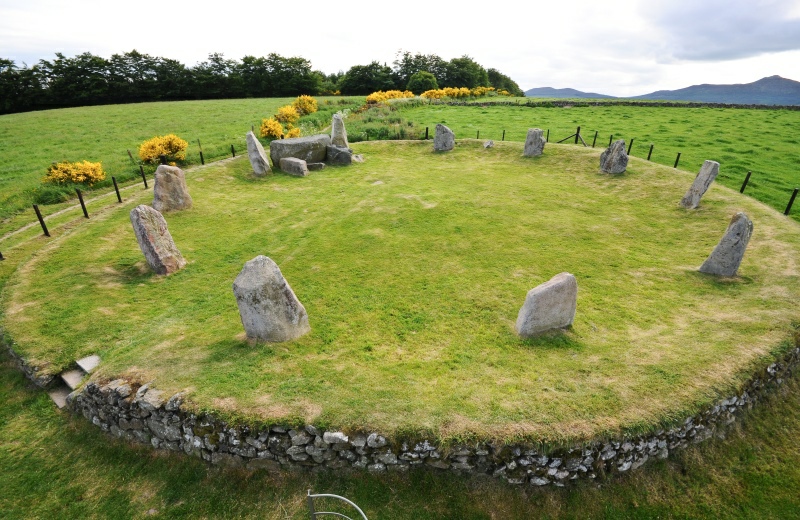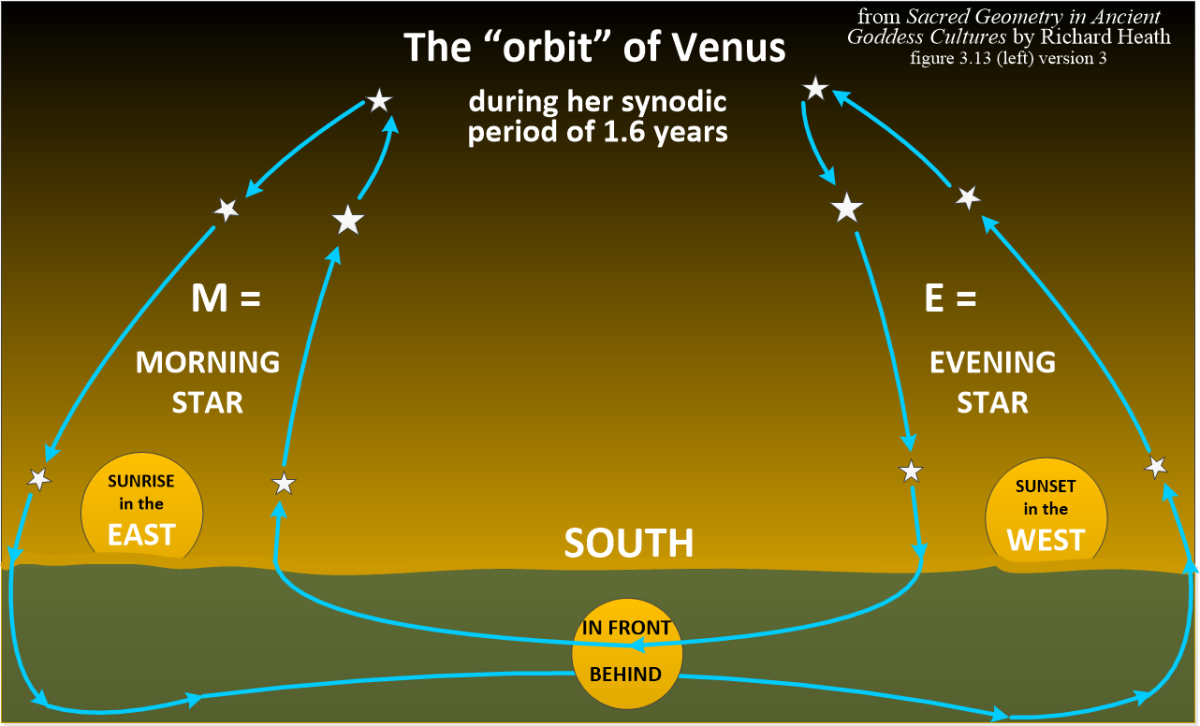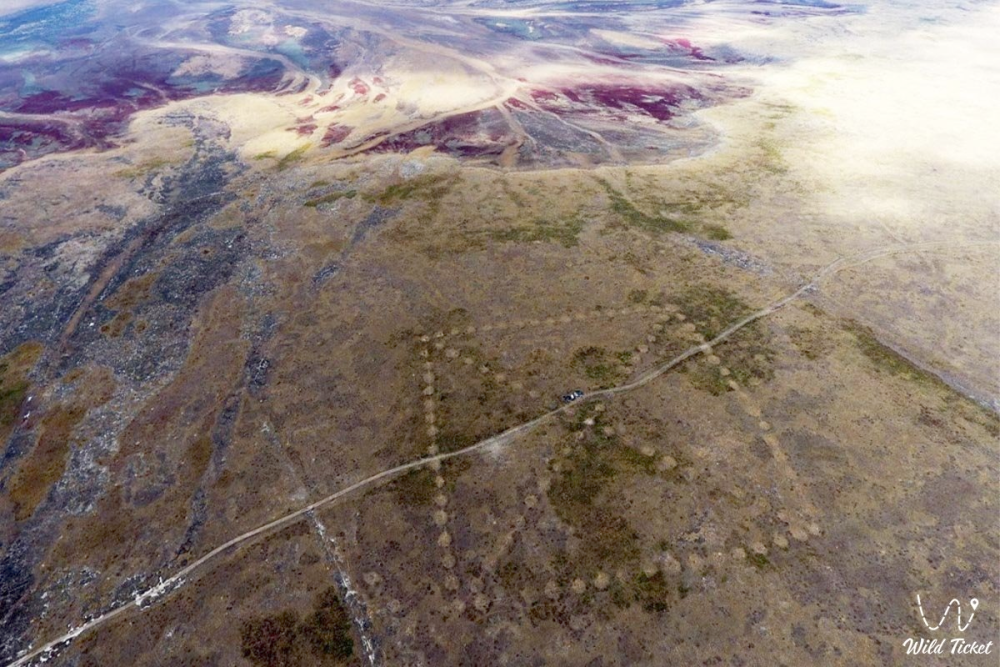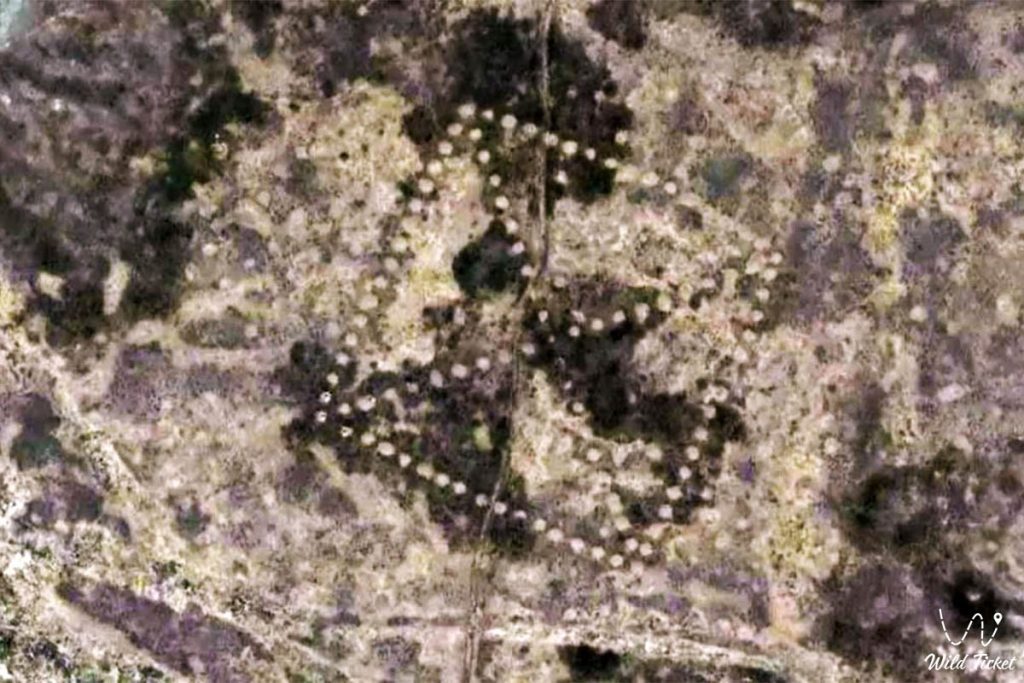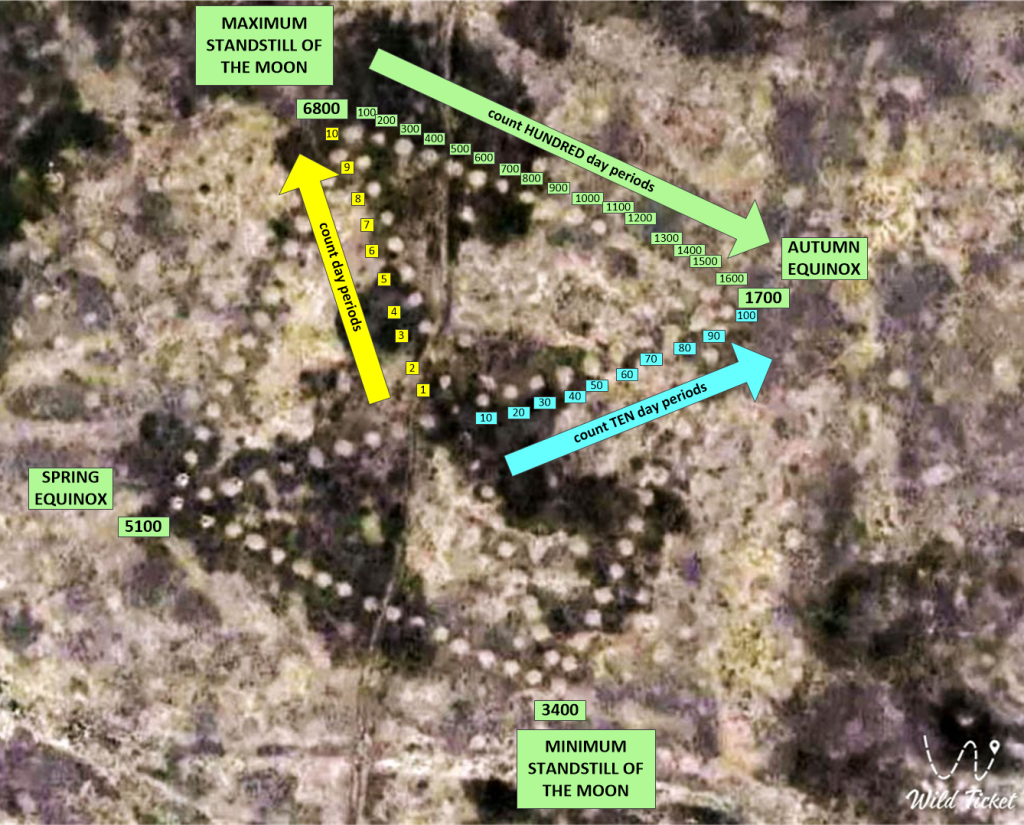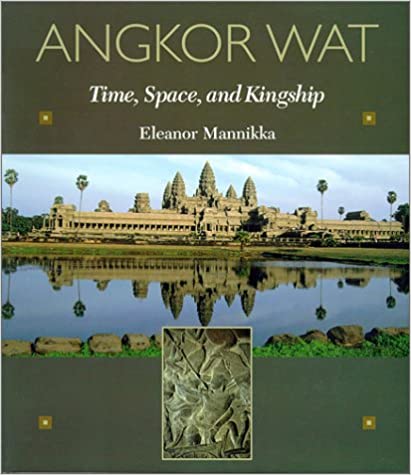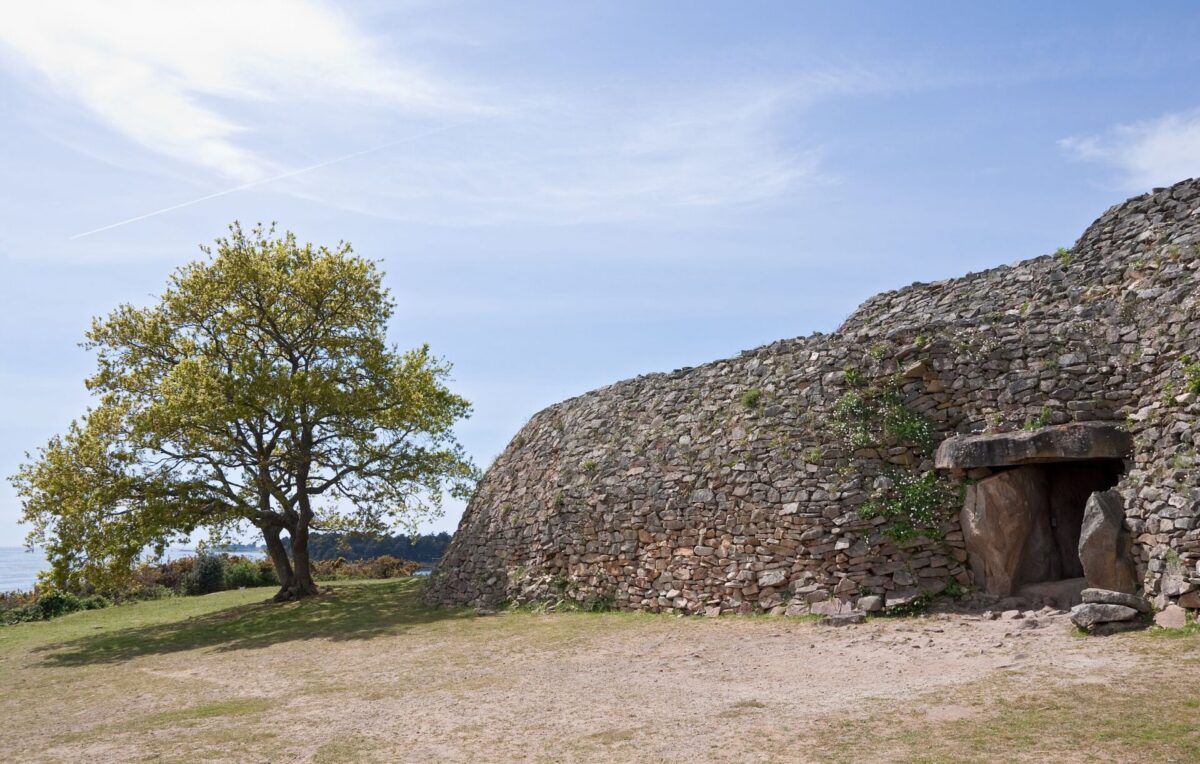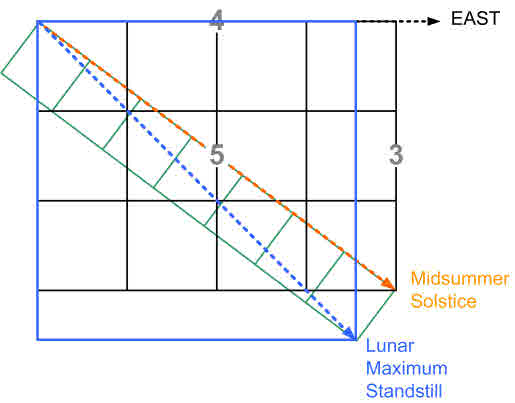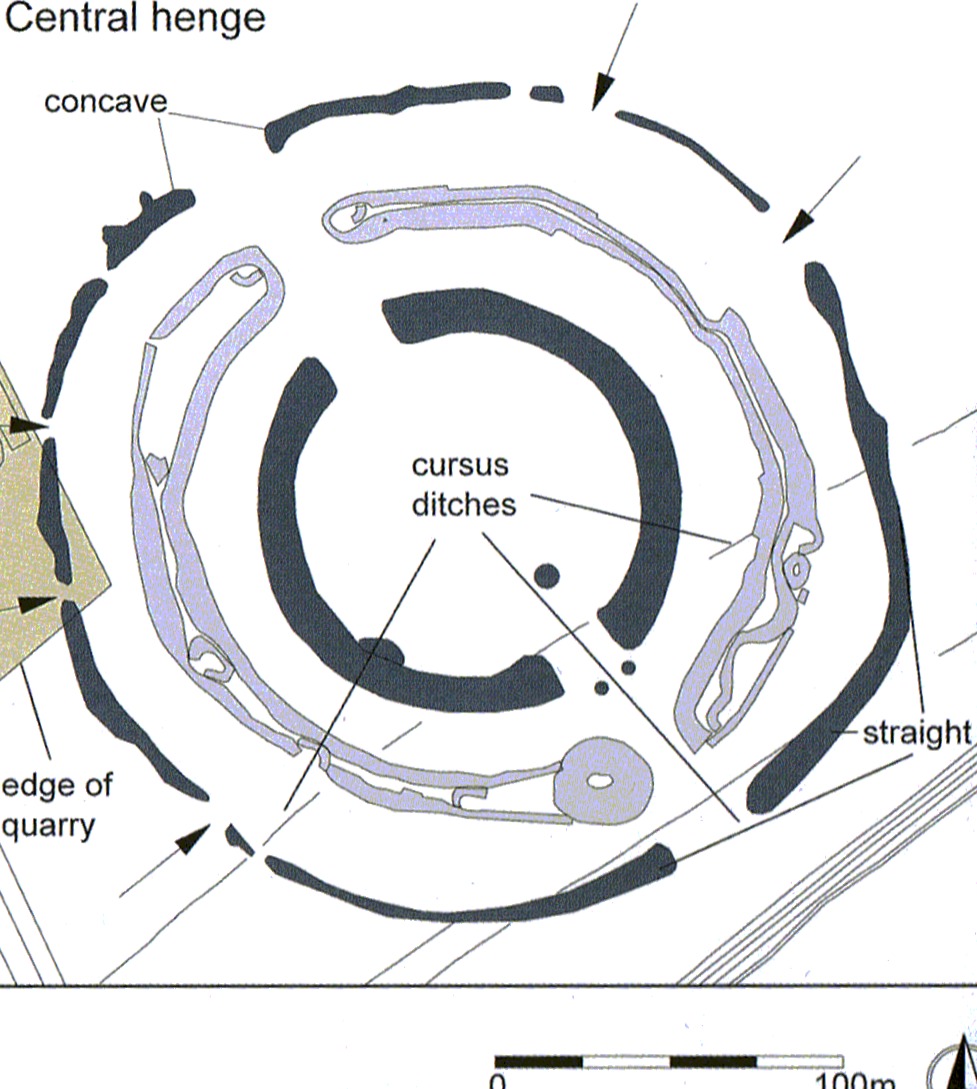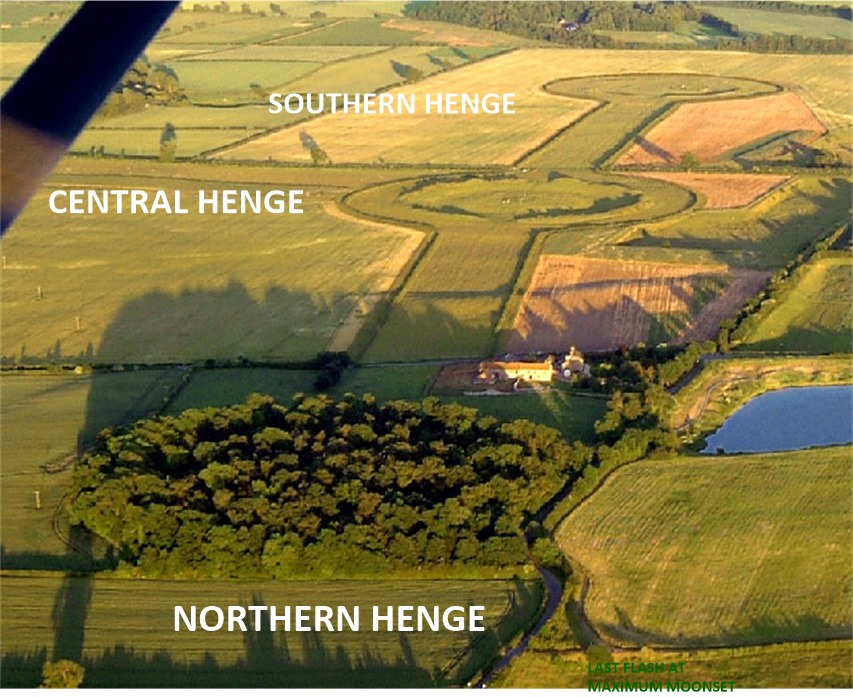Picture by krautrock, a member of megalithic.co.uk in June 2010.
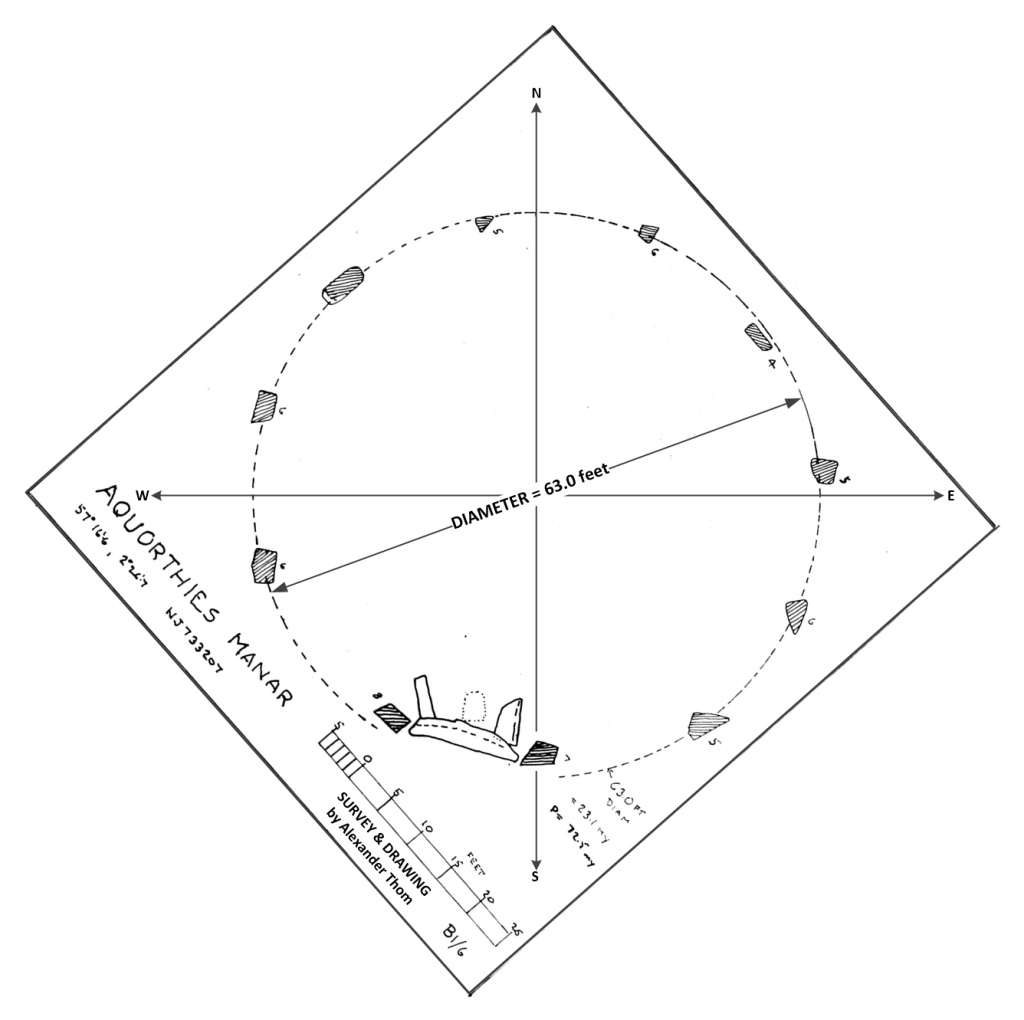
Figure 1 Alexander Thom’s site plan, with cardinal directions and highlighting the diameter .
It is tempting to assume geometry within stone circles and this one invites that by having eleven regularly placed stones,. However, 11 is rarely found in regular geometries or stone circles. But,
- Eleven is associated (geometrically) with the simplest approximate ratio for pi, of 22/7 and, being on a circle perimeter 22 units on the perimeter means 7 as the diameter. However, the diameter here is 7 x 9 = 63 so that 7 units of 9 feet in diameter translates into 22 x 9 = 198 feet on the circumference.
- The second symbolism of eleven is found in the solar time cycles of 33 years which traditionally references as the Solar Hero cycle as the age when heroes die. 33 years was signified in this way because of an exact alignment, at which Equinox sunrise should repeat on the distant horizon every 33 years. While the solar year is 365 whole days long it takes an extra 32/132 of a day for the Earth’s orbit to complete, and this fraction (of 32/132) depends upon 4 x 33 = 132 losing its 33, 33 years after an earlier Equinox on the horizon. (Note that one did not need to know the data and then calculate, as we do today: instead, observation of in-exact solar risings or settings could notice near exact repetitions occurring after 8 years, but more perfectly after 33 years.
Returning to the circle, the circumference of this stone circle is 198 feet which is 6 x 33 = 198 so that the 11 stones may be referencing 33 solar years.
The 33-year period is strangely linked to the movement of the moon’s nodes, which take 18.618 years (of the nodal period) to progress once around the path of the sun (ecliptic). The area under this precession of the lunar nodes (pi x 18.618^2 = 1,088.970022752789) relative to the earth it orbits, which closely equals the area of a square of side 33 x 33 = 1,089.
The megalithic and ancient world both made monuments conforming to the equal area and equal perimeter geometries and even though the equal area situation is proven unsolvable, one sees that (before the notion of an analytic solution) a perfect example was found of a workable pair of numbers (33 years and 18.618 years) was available as these two very significant astronomical time periods.
If the circle is 63 feet in diameter, then one divided by 14 and multiplied by 11 to obtains the square of equal perimeter: 63 x 11/14 = 49.5, which is 99/2 feet on the side. This can then establish the radius of the circle as 18.618 of the same units: When divided by 33, 99/2 becomes 3/2 which is the unit for the radius of the circle of equal namely 18.618 x 3/2 = 27.927 or nearly 28 feet. Below is a picture showing the square and the circle, equal in area in red while the perimeter of the stone circle is equal in perimeter to the red square.

One can see that the red circle embraces the recumbent stone
and its altar-like appendages.

